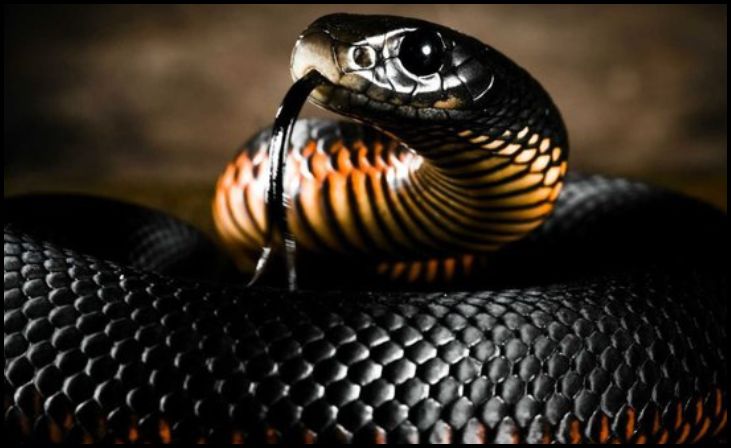Snakes are among the most fascinating and feared creatures on Earth. Their beauty, grace, and lethality have intrigued humans for centuries. Among the thousands of species of snakes, a select few stand out due to their deadly venom and aggressive nature. Here, we explore the seven deadliest snakes on the planet, detailing their habitats, behaviors, and what makes them so lethal.
Inland Taipan: The Silent Assassin

The Inland Taipan, also known as the “fierce snake,” holds the title of the world’s most venomous snake. Native to the arid regions of central Australia, this snake’s venom is estimated to be up to 50 times more toxic than that of the Indian cobra. A single bite from an Inland Taipan can deliver enough venom to kill 100 adult humans. Despite its lethal potential, the Inland Taipan is a reclusive creature that rarely comes into contact with humans. It primarily preys on small mammals and uses its highly toxic venom to immobilize its prey almost instantly. Fortunately, there have been very few recorded bites from this snake, largely due to its remote habitat and shy nature.
Eastern Brown Snake: The Quick Killer
The Eastern Brown Snake is infamous for its speed and aggression. Found throughout Eastern Australia, this snake is responsible for the majority of snakebite fatalities in the country. Its venom contains a potent mix of neurotoxins and coagulants, which can cause paralysis and uncontrollable bleeding. The Eastern Brown Snake is highly territorial and will not hesitate to strike if it feels threatened. This snake’s aggressive behavior, combined with its proximity to human populations, makes it one of the most dangerous snakes in the world. Immediate medical attention is crucial for anyone bitten by this formidable reptile, as its venom can prove fatal within minutes.
Black Mamba: The Fast and the Furious

The Black Mamba is renowned for its incredible speed and lethal bite. Native to sub-Saharan Africa, this snake can reach speeds of up to 12 miles per hour, making it the fastest land snake in the world. The Black Mamba’s venom is a deadly cocktail of neurotoxins and cardiotoxins that can cause rapid onset of symptoms, including severe pain, paralysis, and respiratory failure. Without prompt treatment, a bite from a Black Mamba is almost always fatal. This snake is highly feared due to its aggressive nature and tendency to strike repeatedly, delivering multiple doses of venom with each bite. Despite its fearsome reputation, the Black Mamba typically avoids human contact and will only attack when cornered or threatened.
King Cobra: The Monarch of Venom
The King Cobra, the world’s longest venomous snake, commands respect and fear across its native habitats in Southeast Asia and India. Growing up to 18 feet in length, the King Cobra is a formidable predator. Its venom is not the most toxic among snakes, but the sheer volume of venom it can deliver in a single bite is enough to kill an elephant or 20 humans. The King Cobra’s venom primarily affects the respiratory centers in the brain, leading to respiratory failure and death if untreated. This snake is also known for its distinctive hood and intimidating display when threatened. Despite its lethal potential, the King Cobra is a relatively shy snake that avoids human confrontation whenever possible.
Russell’s Viper: The Stealthy Striker

Russell’s Viper, also known as Daboia, is one of the most dangerous snakes in Asia. It is responsible for a significant number of snakebite incidents and fatalities in countries like India, Sri Lanka, and Myanmar. This snake’s venom contains a complex mixture of hemotoxins, which cause severe tissue damage, internal bleeding, and kidney failure. Russell’s Viper is known for its distinctive hissing sound when threatened and its ability to blend seamlessly into its surroundings. Its bite is extremely painful and can cause death within hours if not treated promptly. Due to its aggressive nature and proximity to human settlements, Russell’s Viper is considered one of the most dangerous snakes in the world.
Saw-Scaled Viper: The Little Terror
The Saw-Scaled Viper, found in Africa, the Middle East, and South Asia, may be small, but it is incredibly deadly. This snake is responsible for more human fatalities than any other snake species. Its venom is a potent mix of hemotoxins and cytotoxins, which cause severe pain, swelling, and bleeding. The Saw-Scaled Viper is notorious for its unique threat display, where it rubs its scales together to create a distinctive “sizzling” sound. This snake is highly aggressive and will strike repeatedly if provoked. Due to its small size, it often goes unnoticed, leading to accidental encounters with humans. Quick medical intervention is essential for anyone bitten by this lethal serpent.
Coastal Taipan: The Coastal Killer
The Coastal Taipan, also known as the Common Taipan, is one of Australia’s most venomous snakes. Found along the northeast coast of Australia and the island of New Guinea, this snake’s venom is extremely potent, containing neurotoxins that can cause respiratory paralysis and death within hours. The Coastal Taipan is highly alert and can strike with incredible speed and accuracy. Its venom acts quickly, and without immediate antivenom treatment, the chances of survival are slim. Despite its deadly nature, the Coastal Taipan is not typically aggressive towards humans and prefers to flee rather than fight. However, when cornered, it can deliver multiple bites in rapid succession, making it a formidable opponent.
Conclusion
The world’s deadliest snakes are fascinating yet formidable creatures. Their venom, speed, and often aggressive behavior make them some of the most dangerous animals on the planet. While these snakes play a crucial role in their ecosystems, helping to control pest populations, their presence demands respect and caution from humans. Understanding these deadly snakes can help mitigate the risks they pose and foster a deeper appreciation for their role in the natural world. Always exercise caution and seek immediate medical attention if bitten by any venomous snake, as prompt treatment can be the difference between life and death.
